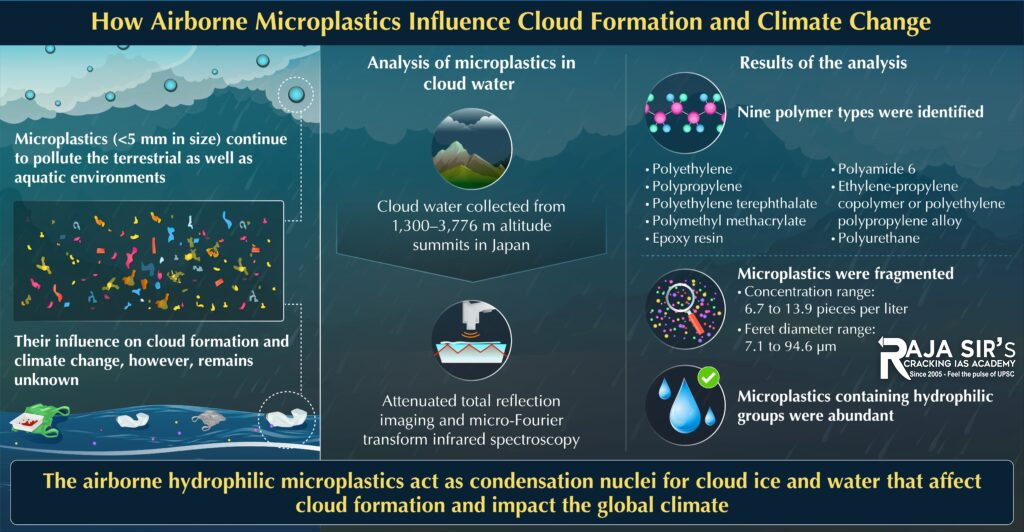- Home
- Prelims
- Mains
- Current Affairs
- Study Materials
- Test Series
Microplastics promote cloud formation
Recent studies reveal that microplastics in the atmosphere may influence weather and climate. Research from Penn State indicates these tiny particles can facilitate ice formation in clouds. This discovery adds to the understanding of microplastics’ pervasive presence on Earth. Their effects on precipitation and climate patterns remain largely unknown.
Microplastics
Microplastics are plastic particles smaller than 5 millimeters. They are found in various environments, including remote locations like the Mariana Trench and Mount Everest. These particles have been detected in human tissues, marine life, and even plant roots. Their widespread presence raises concerns about environmental and health impacts.
Microplastics as Ice Nucleating Particles
Microplastics serve as ice-nucleating particles in the atmosphere. They facilitate the formation of ice crystals in clouds. This process is crucial for understanding how clouds form and influence weather. The presence of microplastics can alter the way ice crystals develop, impacting precipitation patterns.

Research Methodology
Scientists conducted experiments in a controlled laboratory environment. They studied four types of microplastics – low-density polyethylene (LDPE), polypropylene (PP), polyvinyl chloride (PVC), and polyethylene terephthalate (PET). The researchers suspended these plastics in water droplets and cooled them gradually. This setup allowed them to observe the impact of microplastics on ice formation.
Findings on Ice Formation
The study found that microplastics caused water droplets to freeze at higher temperatures. Without defects, droplets typically freeze at around -38 degrees Celsius. However, with microplastics, freezing occurred at -22 degrees Celsius for many samples. This temperature shift indicates that microplastics introduce defects that promote ice nucleation.
The findings suggest that microplastics could affect weather forecasting and climate modelling. They may alter precipitation patterns, which can have cascading effects on ecosystems and human activities. About these interactions is crucial for addressing climate change and its impacts.
|
Importance of Further Research
The research marks the need for more studies on microplastics and their environmental effects. As their presence continues to grow, understanding their role in the climate system becomes increasingly important. Future investigations will help clarify their influence on atmospheric processes and weather patterns.









 Latest News
Latest News
 General Studies
General Studies